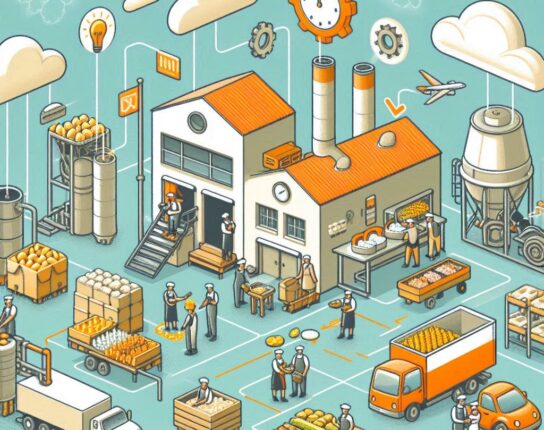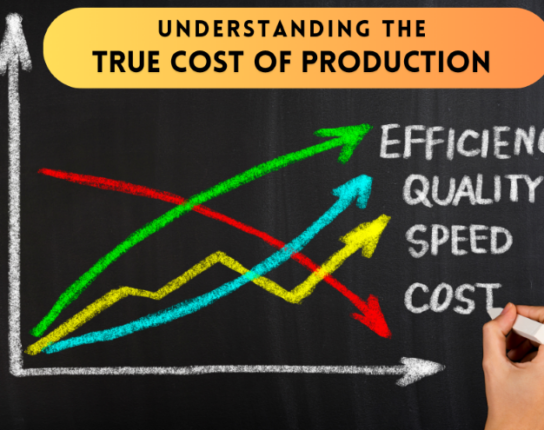It comes as no surprise that in the food manufacturing industry, like many other industries, technology has become commonplace, both in food production and procurement. Many manufacturers are now employing robotics, data, artificial intelligence, and automation in their daily business.
According to a recent report from ING, technology helps food manufacturers produce more efficiently for a growing world population. For context, there are 7.5 billion people in the world right now and that means a higher demand for food each year. Combined with changing consumer demands, technology can help improve the processing, packaging, and shelf life of food.
Luckily, technology is not just for the industry big shots anymore, with one thousand startup companies benefiting from $14 billion in investments for food systems between 2010 and 2014. And this is great news, as digital tools are key to weathering disruptions in the food and agriculture value chain, according to a new report from Lux Research. The company’s Foresight 2021 report identified the top technologies food and agriculture leaders should look to in the year ahead.
“The agrifood ecosystem is experiencing a phase of rapid, intense change, where most of the growth in the space in recent years has gone to companies outside the top 20 players…as smaller and more agile brands meet consumer demand for personalization,” said Joshua Haslun, Ph.D., senior analyst at Lux Research.
Let’s take a look at some of the technology food manufacturers have access to or are already using today:
Robotics and Machines
While food manufacturing may not have been as early to the robotics scene as other industries, it is catching up fast. The immediate benefits of robots in manufacturing are easy to see, such as reduction of on the injuries, performing operations that are risky for humans, increases in uptime, flexibility and order fulfillment and accuracy.
Robotics can be applied to the food manufacturing industry in many ways:
- Packaging
- Processing
- Foodservice
- Delivery
Packaging and Waste
As concerns around the climate crisis continue to increase, so do questions about the impact of other activities on the environment as well. Related is the shift towards more plant-based food products, as people continue to adapt their lifestyles to achieve their health and lifestyle goals. And with information shared so easily with social media, it is easier for consumers to pay attention to labels and be aware of harmful ingredients and non-environmentally friendly processes and packaging.
There are many different ways we are using technology in packaging now with edible packaging, micro packaging, and even bacteria fighting packaging.
Environmentally-friendly packaging is also more likely to attract the consumer, with 46% of consumers willing to pay more for a food product if it was presented in packaging that’s better for the environment than plastic. The additional bonus is not further contributing to landfills – in 2017, food packaging made up 80.1 million tons of municipal solid waste.
Collecting Data
Particularly in these challenging times, one of the most exciting benefits of technology is data collection. Tracking ingredient availability across the full supply chain can identify potential shortages ahead of time, giving you the opportunity to adjust your production schedule. Identifying surplus ingredients provides the opportunity to reduce food waste. Sensors during food transportation give companies real-time data and allow them to adjust any settings such as temperature, humidity, and other conditions.
Data mining will help identify where to find the best supplies and track their availability through the supply chain. Developing proprietary recipes is made easier with artificial intelligence, ensuring that your specific blend of flavors and aromas is carefully duplicated on a large scale. This high level of quality can give your business an edge against the competition.
Predicting consumer demand has become even more difficult than before, and ingredient availability has become more unpredictable. Artificial intelligence is a necessary communication component that can help manufacturers stay better connected between both suppliers and consumers, resulting in an increased volume of higher quality products that can safely reach the people who are ready to buy.
To do business with the biggest customers, you need to have a lot tracking process in place. You need to be able to respond in a short window of time and provide confidence in your data. It also provides you with an overview of the full supply chain in real-time. This helps your business stay organized and have traceability on all products. All this data collected minimizes the risk of tampering, mislabeling, counterfeiting, and product food waste.
Sustainability
Sustainability is a hot topic now, and technology can help food manufacturers create more sustainable products. Just some of the new packaging available now include organic food packaging, edible packaging, reusable packaging, and even bacteria-fighting packaging.
Environmentally-friendly packaging is also more likely to attract the consumer, with 46% of consumers willing to pay more for a food product if it was presented in packaging that’s better for the environment than plastic. The additional bonus being not further contributing to landfills – in 2017, food packaging made up 80.1 million tons of municipal solid waste.
Related is the shift towards more plant-based food products, as people continue to adapt their lifestyles to achieve their health and lifestyle goals. These preferences can be seen in menu changes at fast food places or new versions of old favorites in the grocery store aisle, with Impossible Foods and Beyond Meat being popular examples.
How can you embrace technology?
Food producers and distributors can’t overlook the benefit that technology can have on their operations. from managing sales demand, forecasting, inventory control, production, quality, and shipping. In fact, food companies that have already made investments in technology see the biggest impact on productivity and cost efficiencies, with improvements of up to 20%.
At Harvest Food Solutions, our goal is to help you make your business better. We understand the importance of data, and we are passionate about putting technology to work for you. If you’re wondering how to put the power of modern software and technology to your food business, then we are your next technology partner.










